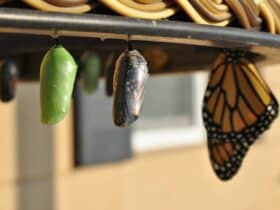Journaling, a traditional form of expressing personal thoughts, feelings, and daily activities, has stood the test of time. This time-honored hobby has profound psychological benefits, such as fostering self-reflection, enhancing mood, and honing writing skills. However, there’s a broader universe of creative activities to explore that share the essence of journaling.
This article unfolds the fascinating realm of hobbies similar to journaling, allowing you to venture into new paths of personal expression.
The Art of Blogging
Blogging is an attractive hobby that, much like journaling, is rooted in self-expression and the sharing of experiences. As a virtual platform, it allows individuals to express their thoughts, share knowledge, and interact with a global audience. Whether it’s about travel, cooking, photography, or personal thoughts, blogging can be a dynamic extension of traditional journaling.
At their core, both blogging and journaling center around storytelling and the articulation of personal experiences. They share the fundamental process of translating thoughts into words, albeit in different mediums. However, blogging goes a step further by making these narratives available to the world, opening up opportunities for dialogue and shared perspectives.
Starting a blog is easier than it might seem. Begin with identifying a niche you’re passionate about. Next, choose a blogging platform that suits your needs – there’s a wide variety from which to choose, including WordPress and Blogger. Then, you can design your blog, craft engaging content, and finally, promote it via social media or SEO techniques to garner visibility.
Discovering Scrapbooking
If you’re interested in hobbies similar to journaling, scrapbooking might be your calling. This artistic hobby involves the compilation of photographs, printed media, and decorative items to create multi-dimensional entries that are visually appealing and emotionally evocative.
Much like journaling, scrapbooking is a personal journey of documenting life’s experiences. The primary difference lies in the medium of expression; while journaling is textual, scrapbooking involves visual and tangible elements, offering a sensory richness that words alone might not capture.
To dive into scrapbooking, begin by choosing a theme. It could be an event, a period of your life, or a person. Then, gather relevant materials such as photographs, ticket stubs, or letters, and purchase a scrapbook album and art supplies. Finally, let your creativity run wild as you design your pages. Remember, each page is a snapshot of your life, much like a journal entry.
Diving into Digital Journaling
In the age of technology, digital journaling is gaining traction for its convenience and versatility. This modern iteration of traditional journaling allows you to log your thoughts and experiences digitally, using a laptop, tablet, or smartphone.
Digital journaling shares the reflective nature of journaling but offers additional benefits. The flexibility to incorporate multimedia elements such as photos, videos, and links enriches your entries, while the ease of editing, organizing, and searching your logs enhances usability.
Starting a digital journal can be as simple as creating a dedicated document on your device or as advanced as using a specialized app. Apps like Day One or Journey provide a rich user experience, including features like mood tracking, weather logging, and password protection.
The Magic of Creative Writing
If you are interested in hobbies similar to journaling, creative writing is an immersive hobby that fosters self-expression, similar to journaling. It allows you to experiment with various forms of literary styles, such as poetry, short stories, and plays, venturing beyond the boundaries of factual narratives.
Creative writing and journaling are tied together by the thread of self-expression. Both offer a cathartic outlet for thoughts and emotions. However, creative writing lets you explore these experiences through a fictional lens, offering a unique blend of truth and imagination.
To start your creative writing journey, you might first choose a genre you’re interested in. Whether it’s romance, fantasy, or science fiction, pick something that sparks your creativity. Next, you can engage in writing exercises or prompts to practice and develop your skills. Remember, creativity thrives on regular practice, so commit to writing consistently.

Photography: Capturing Moments
Photography, as a hobby, offers a visually creative way to document personal experiences. Instead of jotting down thoughts and events as in journaling, photography involves capturing these moments in images, thereby freezing time and preserving memories visually.
Photography and journaling share the goal of memory preservation and storytelling. Both can capture the beauty of everyday moments and immortalize them. However, photography tells stories without words, making it an exciting alternative or complement to journaling.
To embark on your photography journey, start with understanding the basics of your camera, whether it’s a professional DSLR or your smartphone. Learn about lighting, composition, and framing to improve your shots. Additionally, consider joining photography communities online to share your work and receive feedback.
The Calm of Mind Mapping
Mind mapping, while distinct in its approach, shares journaling’s reflective and creative qualities. This brainstorming technique involves visually organizing information around a central concept, aiding in problem-solving, planning, and decision-making.
Journaling and mind mapping both facilitate introspection and clarity of thought. However, while journaling is linear and textual, mind mapping is non-linear and visual, offering a comprehensive view of complex ideas at a glance.
Starting a mind map involves choosing a central idea and adding branches for related topics or sub-topics. You can use different colors, images, or symbols to make your map engaging and easier to understand. Several digital tools, like MindMeister or XMind, can facilitate this process.
Bullet Journaling: Organized Creativity
If you are looking for hobbies similar to journaling, check out “Bullet journaling”, or ‘BuJo,’ which is a popular hobby that marries the principles of journaling, note-taking, and planning. This system, designed by Ryder Carroll, allows you to log the past, organize the present, and plan the future in an aesthetically pleasing manner.
Like traditional journaling, bullet journaling provides an outlet for personal expression. However, it goes a step further by incorporating task management, offering a holistic system for personal organization.
Starting a bullet journal requires a notebook and a pen. You then create various sections, including an index, future log, monthly log, and daily log. Additionally, you can incorporate ‘collections’ for specific themes or goals. This system, while flexible, encourages mindfulness and productivity.
Conclusion
Exploring hobbies similar to journaling opens a wide horizon of personal expression. Whether it’s the global reach of blogging, the tangible creativity of scrapbooking, the technological convenience of digital journaling, the imaginative potential of creative writing, the visual storytelling of photography, the cognitive clarity of mind mapping, or the organized mindfulness of bullet journaling, each hobby offers unique benefits and experiences. So venture out, pick a hobby, and discover a new universe of self-expression and creativity.


















